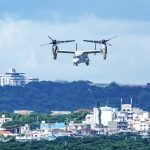Exhibition showcasing China's manned space achievements kicks off; new-gen manned spacecraft on display for first time

An exhibition showcasing China's 30 years of achievements in manned spaceflight opened at the National Museum of China on Friday. For the first time, the new-generation of manned spacecraft and the lunar surface lander are on public display, according to China Manned Space Agency (CMSA).
The exhibition highlights China's ambitious space pursuits, showcasing the breakthroughs and core technologies that the country has successfully mastered in the process. Through its endeavors, China has paved a unique path of development for its aerospace industry.
The China manned spaceflight program, established in 1992, ended in 2022 with the completion of China's space station. The station has now fully entered the operation and application stages, the CMSA said.
Some 27 manned spaceflight tasks were carried out over the 30 years, all of which were completed successfully and in a spectacular manner, according to the CMSA.
The exhibition will run for three months. The main exhibits include a life-size model of the Tianhe core module that visitors can walk into, a model of the space station assembly, as well as models of the Long March carrier rockets that have been commissioned for space station-related tasks. The model of the new-generation manned launch vehicle will also be on display.
The show will also include spacesuits, the Shenzhou-13 return capsule, rocket engines, the life support system onboard the space station, and the flag of the Communist Party of China that taikonauts carried into space.
Experts believe that the exhibition will better illustrate China's space achievements, promote the spirit of patriotism, popularize knowledge of space science, and inspire the public, especially young people, to courageously explore the unknown and pursue their dreams, the Global Times learned from CMSA.
As one of the most complex scientific projects with the most intensive technologies and innovations, manned spaceflight covers a variety of fields such as mechanics, astronomy, earth science, aerospace medicine and space science.
It also involves a number of engineering technologies such as system engineering, automatic control, computer science, remote sensing and new materials, earning the label of "masterpiece" in the field of national scientific and technological achievements.
The manned spaceflight project has obtained more than 4,000 invention patents over the three decades, resulting in leapfrog development in the aerospace industry and pushing forward the rapid development of raw materials, microelectronics, machinery manufacturing, chemical industry, metallurgy, textile, communication and other fields, greatly promoting the overall advancement of China's science and technology level, the Global Times learned on Friday.


